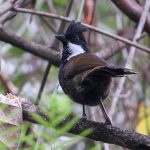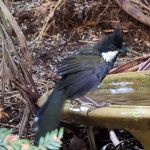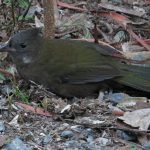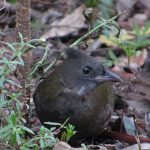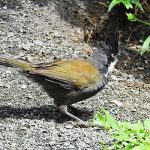EASTERN WHIPBIRD
The Eastern Whipbird is s native to eastern Australia. It is known for its unique calls, cryptic plumage, and intriguing behavior.
Eastern Whipbirds are medium-sized birds with distinctive plumage. They have dark olive-green upperparts and a white belly, which provides them with excellent camouflage in the dense undergrowth of their habitat. They also have a black crown and a long, thin white cheek stripe that stands out against their dark plumage.
One of the most remarkable features of Eastern Whipbirds is their loud and distinctive call, which consists of a double note that sounds like the cracking of a whip. The call is usually a duet between a male and a female, with the male making the first note (“whip”) and the female responding with the second note (“crack”). This call is used for communication between mates and to establish territory.
Despite their loud calls, Eastern Whipbirds are known for being secretive and elusive. They tend to hide in the dense undergrowth of rainforests, wet sclerophyll forests, and dense shrublands, making them difficult to spot.
Eastern Whipbirds are omnivorous and feed on a variety of food items, including insects, spiders, small vertebrates, and plant matter. They forage on the forest floor, scratching through leaf litter and undergrowth to find their prey.
These birds have interesting breeding behavior. They form monogamous pairs and build cup-shaped nests in dense vegetation, typically close to the ground. The female lays eggs, and both parents share the responsibilities of incubation and caring for the chicks.
Eastern Whipbirds are primarily found in the eastern coastal regions of Australia, from south-eastern Queensland through New South Wales and into Victoria. They prefer dense and moist habitats, such as rainforests and wet eucalypt forests, where their cryptic plumage helps them blend in with the surroundings.
While the Eastern Whipbird is not considered threatened, it is subject to habitat loss and fragmentation due to urban development and agriculture. Conservation efforts should be aimed at preserving its habitat and ensuring the protection of the ecosystems in which it resides.
The Eastern Whipbird distinct “whip-crack” call is a characteristic feature of the Australian bush, and its ecology and habitat preferences make it an interesting species for bird enthusiasts and conservationists alike.

